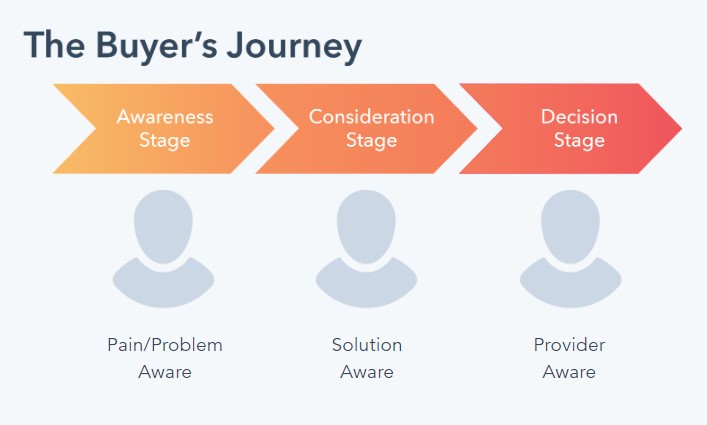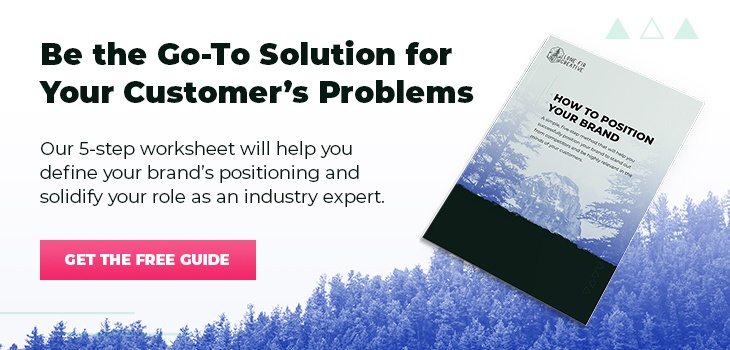What Is the Inbound Marketing Methodology?
Growing up, my mom would always tell me, "You can catch more flies with honey than with vinegar."
Much like honey, inbound marketing works to attract new customers to your brand instead of hitting them over the head with traditional outbound marketing tactics and hoping for a response.
Don't get me wrong, traditional marketing methods still have their place (everyone needs to be hit over the head sometimes right?) but in the age of digital marketing, consumers crave a more inviting approach. Prospects want an experience that feels personalized. They want to know and trust a brand before they make a purchase decision. In short, they want to be wooed.
The Inbound Flywheel
The inbound methodology is the process of turning prospects into customers. There are three stages to this process:
- Attract: This is where you make a first impression on your target audience. Your focus in this phase should be to build trust and provide value with relevant content.
- Engage: At this stage, you engage qualified leads that are interested in becoming customers. The focus here is on making the purchasing process easy by removing as many obstacles in the buyer's journey as possible.
- Delight: In this stage, your focus is on the customer experience. You want to continue going above and beyond to create happy customers because they’re likely to become promoters of your product.
HubSpot, which popularized the inbound methodology, likes to illustrate these phases as a flywheel instead of a traditional sales funnel. That's because a good inbound marketing strategy is cyclical. If someone is attracted to your brand, then they engage with it and (hopefully) have a delightful experience. So delightful that they start helping attract more customers who also engage with your brand, become delighted and, well, you get it.
Every customer-facing team should know how to play their part in attracting, engaging and delighting potential customers. Your employees need to feel like they've got an important role to play in this process (and they do!); so providing proper training on how to attract, engage, and delight is key.
Implementing the Inbound Methodology
Content Marketing
Since inbound marketing is focused on attracting your prospects rather than interrupting their day-to-day, content creation plays a critical role in an inbound marketing strategy. Helpful content educates prospective customers in the attract stage and will help to support your lead generation efforts.
There are many different types of content you can use to attract new customers, such as blogs, social media posts, ebooks and webinars. Most of this should be free to view and optimized for SEO so people can find it with a quick Google search. Some of it, however, can be gated as a way to encourage people to give you their contact information in exchange for quality content that will solve their problem.
It's important that you build a content marketing strategy that speaks directly to your ideal customer and their pain points. To do that, you need to know who your customer is and the journey they take to purchase your product. Use your CRM or notes from past inbound sales to help you identify recurring customer issues and prepare ways to address them head-on in the sales process.
(If you don't have a clear picture of who your customer is, the problem they have and how your solution can address that problem, consider starting with your brand's core messaging.)
Who is Your Customer?
While many marketers still use buyer personas to define who their ideal customer is, we've found that the StoryBrand Framework provides a more concise profile of your customer and can be completed more quickly.
Regardless of the method you use, you need to be able to answer the following three questions:
- What problem do you solve?
- How do you make life better for your customer?
- Why should they buy from you and no one else?
Once you have the answers, you should pass all your content and strategy through that filter. This includes your landing pages and email marketing efforts too. That will ensure that you're creating the most effective content and sales funnel you can.
What Does Their Journey to Purchasing Look Like?
Once you define your customer, their problem and how your solution helps, it will then be possible to define what the buyer's journey looks like, and how your sales and marketing techniques fit into each stage.
Sales funnels typically break up the buyer's journey into three stages: awareness, consideration and decision.

As you create your content, look for areas where you might have gaps. Your calls to action (CTAs) and content should be customized for each stage of the buyer's journey because prospects will have different questions as they progress through your funnel.
Make Inbound Scalable with Marketing Automation
Nurturing your leads towards a sale is a big part of gaining more traction for your product or service. Marketing automation helps streamline follow-up processes so you can easily scale all your inbound efforts. Here are a few of the high-impact areas you should focus on first:
- Follow-ups to content offers: Enroll contacts that download a content offer in an automated email series that drives them towards a sale.
- Automatically segment high-intent leads so your sales team knows which ones to focus on first.
- Automatically prompt bottom-of-the-funnel leads to schedule a call with your sales team.
Where to Start with Inbound Marketing
So where do you start? Often times the easiest place to start implementing your inbound marketing strategy is with content. Ask your sales team what questions they get from prospects and write some articles around that. They might not be perfectly optimized, but they're a great way to get your foot in the door while creating something valuable for prospects at the same time.
On the other hand, if you're ready to implement a full strategy, you might want to talk to our (super fun) team of inbound marketers. Not only will you want to get a beer with them (I do) they can help build a strategy you're excited about and that actually works. Just tap these words right here to schedule a call.








